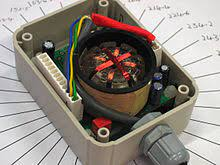
Magnetometry, the measurement of magnetic fields, is an essential tool in modern geology. This technique provides invaluable insights into the Earth’s subsurface structures, contributing significantly to our understanding of geological processes.
This blog delves into the application of magnetometry in geological studies, highlighting its importance, methodology, and diverse applications. Let’s find out the use of a magnetometer in Geology!
Introduction to Magnetometry in Geology
Magnetometry in geology involves measuring Earth’s magnetic field variations caused by subsurface rock formations. These variations can reveal hidden structures and compositions, offering clues about geological processes that have shaped the Earth over millions of years.
Principles of Magnetometer Operation
Magnetometers detect and measure the strength and direction of magnetic fields. Geological magnetometers are sensitive to the magnetic properties of rocks, particularly those containing ferromagnetic minerals like iron. When these rocks are subjected to Earth’s magnetic field, they become magnetized, creating anomalies detectable by magnetometers.
Types of Magnetometers
Several types of magnetometers are used in geology:
- Proton Precession Magnetometers: Measure the magnetic field by detecting the precession of protons in a magnetic field.
- Fluxgate Magnetometers: Use the saturation of magnetic cores to measure the Earth’s field.
- Optically Pumped Magnetometers: Employ the principles of quantum mechanics and the behavior of electrons in an atomic gas.
Each type has specific advantages, depending on the required sensitivity and the geological context.
Geological Applications of Magnetometry
- Mineral Exploration: Magnetometry helps locate ore deposits, particularly iron ore, nickel, and cobalt. It identifies magnetic anomalies that may indicate the presence of these minerals.
- Archaeological Geophysics: In archaeology, magnetometry can uncover buried structures, offering a non-invasive method to explore historical sites.
- Tectonic Studies: Magnetometers map geological structures related to tectonic activity, like fault lines and subduction zones.
- Environmental Studies: They detect pollution in soils and sediments, particularly ferrous material from industrial processes.
- Oil and Gas Exploration: Magnetic surveys help map the Earth’s crust to understand sedimentary basins’ structure, essential for hydrocarbon exploration.
- Volcanology: Magnetometers track changes in the magnetic field associated with volcanic activity, aiding in monitoring and predicting eruptions.
Methodology of Magnetic Surveys
Geological magnetic surveys can be conducted over land, air, or sea. The method chosen depends on the survey’s objectives and the geographical area. Airborne surveys cover large areas quickly, while ground surveys provide detailed local data. Sea-based surveys are crucial for studying the ocean floor and the Earth’s crust beneath oceans.
Data from these surveys are processed and interpreted to reveal geological structures. Advanced software models the magnetic data to visualise subsurface formations.
Challenges in Magnetometric Surveys
- Noise Reduction: Magnetic noise from external sources, like electrical equipment or solar activity, can interfere with readings.
- Interpretation Difficulties: Determining the exact source of magnetic anomalies can be complex, requiring supplementary geological data and expertise.
- Accessibility: Inaccessible or hazardous terrain can pose significant challenges for ground surveys.
Case Studies in Magnetometry
- Mining Exploration: Magnetometry has been instrumental in discovering large iron ore deposits in regions like Western Australia and Brazil.
- Understanding Earthquakes: In tectonic studies, magnetometers have helped understand California’s San Andreas Fault structure.
- Historical Geology: Magnetometry has revealed hidden geological features like ancient riverbeds and glacial structures.
Advancements in Magnetometry
Technological advancements have enhanced magnetometry’s precision and usability. Developments include:
- High-Resolution Magnetometers: These offer greater detail in mapping subsurface features.
- Integration With Other Geophysical Methods: Combining magnetometry with methods like seismic surveys or ground-penetrating radar provides a more comprehensive geological picture.
- Data Processing Techniques: Improved algorithms and computing power enable more accurate interpretation of magnetic data.
The Future of Magnetometry in Geology
Magnetometry is poised to play a pivotal role in future geological studies. Its applications expand into areas like climate change studies, where it can track past magnetic field variations related to Earth’s climate history. Additionally, with the increasing demand for rare earth elements and minerals for technology industries, magnetometry will be crucial in exploring and developing these resources.
The Role of Magnetometry in Climate Change Studies
A relatively new and exciting application of magnetometry in geology is its role in climate change studies. By analysing the magnetic properties of sediments and rocks, scientists can reconstruct past environmental conditions and understand climate variations over geological timescales. This includes studying magnetic minerals deposited in ocean beds and lake sediments, which carry signatures of historical climate shifts.
Such insights are vital for modeling future climate scenarios, providing a deeper understanding of the Earth’s natural climate cycles and how they might influence contemporary climate change trends. This emerging application highlights magnetometry’s versatility and continued relevance in modern Earth sciences.
Conclusion
Magnetometry has revolutionised our understanding of the Earth’s geological processes. By revealing hidden structures and compositions beneath the Earth’s surface, it has become an indispensable tool in various geological applications, from mineral exploration to environmental studies.
As technology advances, the scope and precision of magnetometric surveys will only increase, furthering our understanding of the complex and dynamic Earth.

Tech Hub Digital, a one-stop destination for complete technology-related information.

